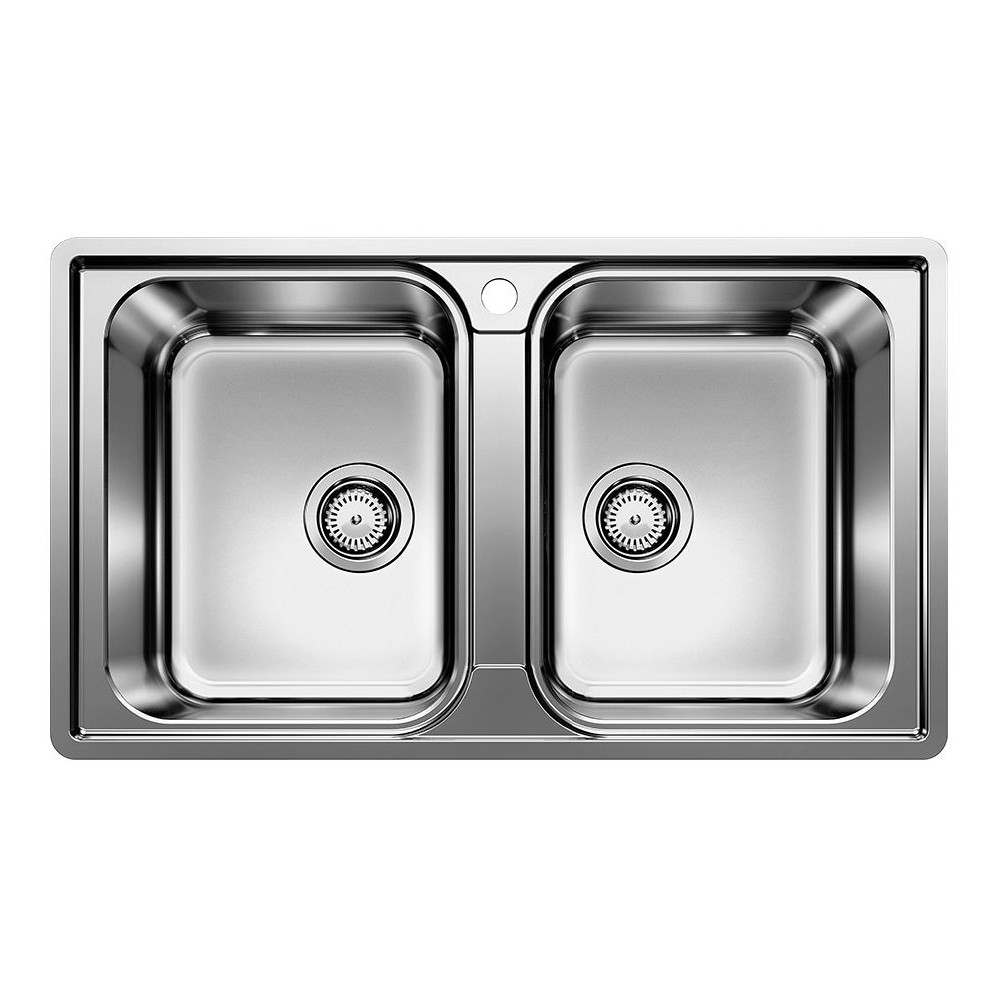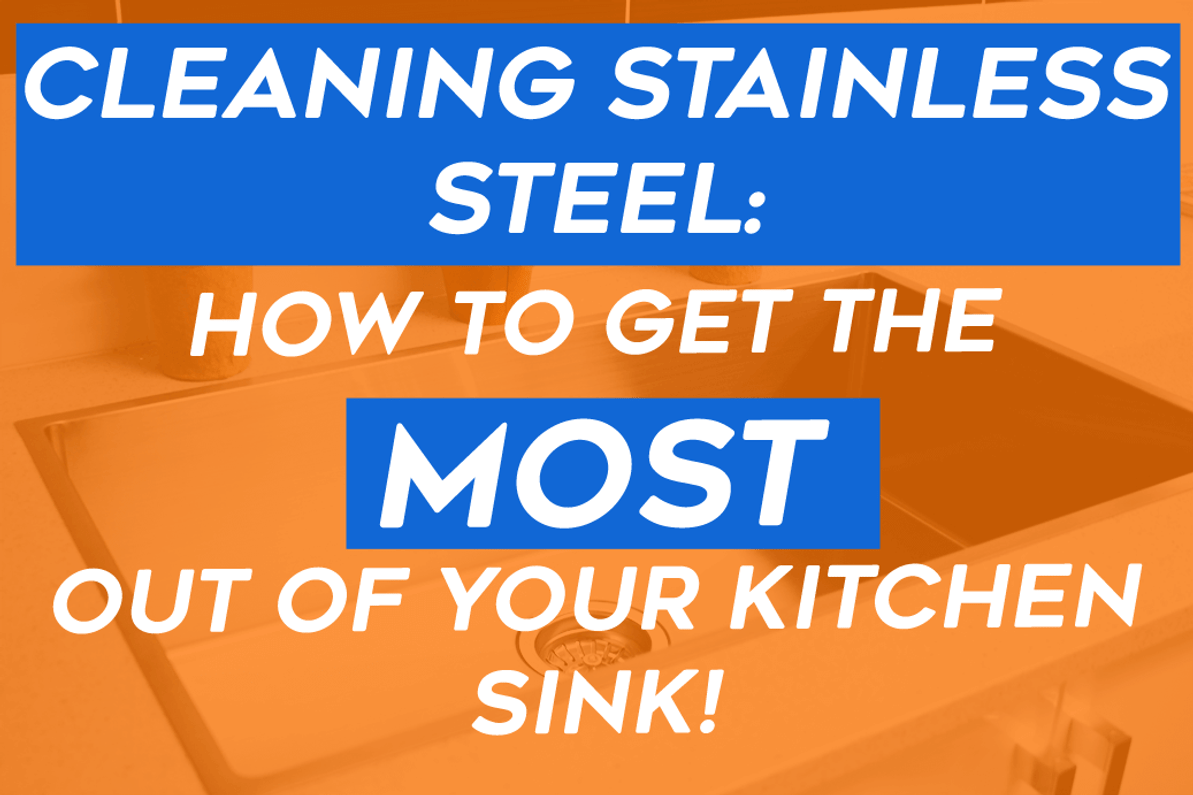Cleaning Stainless Steel: How To Get The Most Out Of Your Kitchen Sink!
Cleaning Stainless Steel
Whether you have just purchased a shiny new kitchen sink, or have an old well-loved sink, proper steps should be taken to keep it looking brand new and to extend its lifespan. This article will go over the two most common types of stainless steel, and the best methods of cleaning stainless steel to keep your sink looking great years later.
Main Types of Stainless Steel
For residential purposes, most stainless steel comes in one of two “grades”, called 304 and 316. 304 stainless steel is the most widely used, making up about 50% of all stainless steel produced, as it has very good corrosion resistance and is easily shaped. 304 stainless steel is always composed of at least 50% iron and less than 0.8% carbon, however other components can vary. The most common two variants are referred to as 18/8 and 18/10. That is, 18% Chromium, 8% Nickel or 18% Chromium, 10% Nickel. The extra nickel content in 18/10 stainless steel provides a higher resistance to corrosion, while also giving a shinier appearance to the metal. Because of these benefits all of the stainless steel sinks available from The Sink Warehouse are 304 Stainless Steel, with an 18/10 mix.
The other widely used grade is 316 stainless steel, often referred to as “marine-grade”, accounting for about 20% of all stainless steel produced. 316 stainless steel is similar in composition to 304 grade, but with the addition of molybdenum to its metal mix. Molybdenum gives the stainless steel a higher resistance to pitting and corrosion in warm chloride environments, such as on boats, or sea-front properties, not something that is necessary for a kitchen sink.
Caring For Your Sink
Stainless steel gains its corrosion resistance from a thin layer of chromium oxide that builds up on the surface of the metal, protecting it from any further oxidisation. It is important to keep this layer clear of dirt and other impurities to maximise the lifespan of your sink. Cleaning stainless steel regularly is key to a long lifespan and to preserve the high quality appearance. Unlike other materials, it is not possible to wear out stainless steel with excessive cleaning.
Cleaning dirt from the sink is as simple as wiping down with warm soapy water and a clean cloth. For more stubborn dirt build ups non-abrasive household cleaners can be used, however it is very important to avoid any cleaners containing chlorine as this can get underneath the chromium oxide layer and cause serious damage to the finish of the sink.
Fingerprints are a common annoyance with stainless steel sinks, usually being more prominent on a mirror polish finish than a brushed finish. Any fingerprints can normally be removed with the same warm water and cloth method as most dirt, but stubborn marks can be cleaned off with a dedicated stainless steel cleaner like 3M stainless steel cleaner and polish.
For more stubborn stains and discolouration a mildly abrasive cleaner is best, Autosol is a great example of a metal cleaner that gives good results on stainless steel, high abrasive cleaners should be avoided as they can cause visible scratches on the finish of the metal. When cleaning with an abrasive it is important to use a clean, dry cloth and to follow the direction of the polish lines so as not to ruin the factory brush or polish finish.

Conclusion
As you can see, cleaning stainless steel is easy as its a very versatile easy to care for material, provided that some care is taken to maintain the surface of the metal. Being careful to avoid any chloride-containing detergents or harsh abrasive cleaners will ensure that your sink does not discolour or mark. Wiping down the surface after use and keeping it as dirt free as possible will keep the sink shining, and the occasional polish will remove any stubborn fingerprints or marks.
If you follow these steps you will be able to enjoy the shiny and new appearance of your sink for many years to come.
If you have a stainless steel sink, let us know what you love about it - leave a comment below!
a
Recent Posts
-
Essential Tools for Unpacking and Installing Flat-Pack Cabinets
Diving into the world of DIY can be both exhilarating and intimidating, especially when it comes to …20th Apr 2024 -
Elevating The Vines: A Complete Home Renovation with The Sink Warehouse Products
Welcome to The Sink Warehouse blog, where we're thrilled to take you on a journey through the remar …15th Apr 2024 -
Enhancing Accessibility and Independence: Your One-Stop Solution for Assistive Bathroom Products - The Sink Warehouse
When it comes to creating a safe and accessible bathroom environment for individuals with aging or m …3rd Apr 2024




